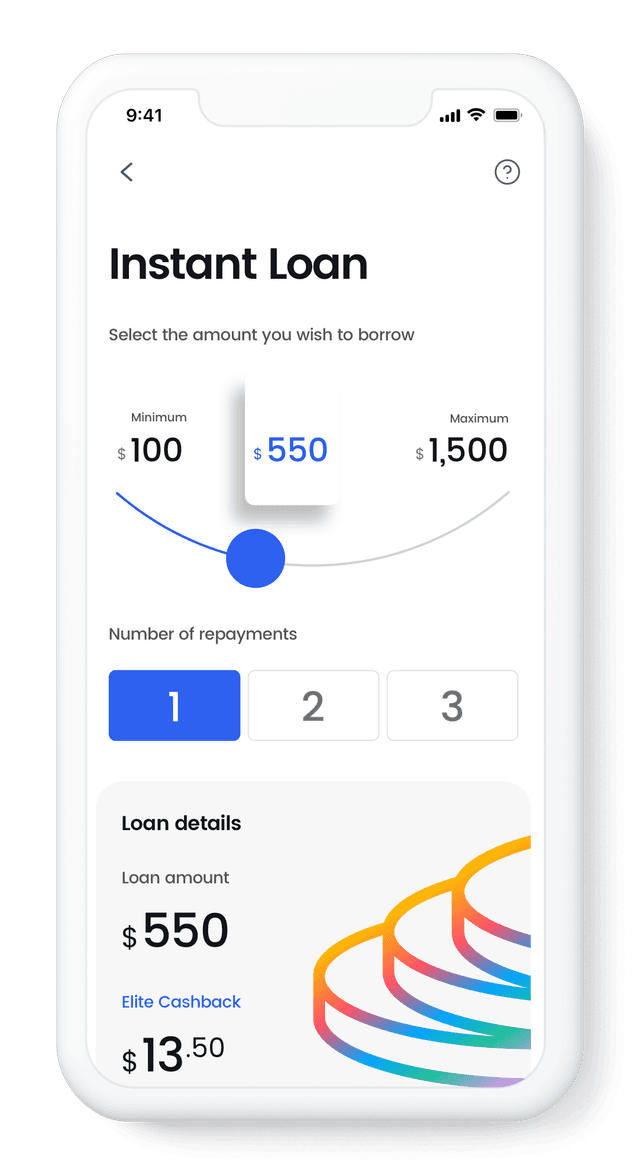A recent Canadian survey found that 45% of students graduated with debt.
According to MoneySense, “The average debt among all students is just under $13,000 but more than doubles to almost $29,000 when only those reporting debt are considered,” and students needed over $19,000 to finance a single year of education.
These numbers highlight why learning to manage money is so important in college, and that’s a topic this article will cover in detail.
In this article, we’ll explore how Canadian college students can effectively manage their money, from creating a realistic budget and finding ways to save money, to understanding financial aid options and avoiding excessive student debt.
Creating a College Student Budget that Works
Budgeting is the cornerstone of financial literacy for any student. A budget is simply a plan for how you will spend and save your money each month.
Determine Your Income and Expenses
This means including every expense of student life– not just tuition, but also student fees, housing, food, transportation, and personal expenses.
In fact, tuition for Canadian undergraduates averages about $7,360 per year, but when you add living expenses like rent, groceries, and books, the total cost of education is much higher.
Remember to count sources of income too: savings, part-time job earnings, scholarships, student loans, or help from family.
Identify Fixed vs. Variable Expenses
Fixed expenses are the costs that stay the same each month, while variable expenses can change.
For example, your rent and phone bill are fixed amounts, but you have more control over how much you spend on dining out or entertainment. Separating needs (must-pay expenses) from wants (nice-to-haves) will help you see where you can cut back if needed.
Finally, try to put at least 20% of whatever money you have (after covering expenses) toward your financial goals.
Monitor Your Spending
Keep a close eye on your spending (for example, weekly check-ins) and adjust as needed. If you spend more in one category, find ways to spend less in another so you don’t run out of money.
Smart Ways for Students to Save Money

Here are some practical tips to keep more money in your pocket without sacrificing your social life or well-being:
Take advantage of student discounts
Buy used or find free resources
Cook and meal plan
Limit discretionary spending
Consider a part-time job or side hustle
Every dollar saved is a dollar you won’t need to borrow on a credit card or student loan, which brings you closer to graduating without a heavy financial burden.
Navigating Financial Aid and Student Loans in Canada
Post-secondary education is expensive, but thankfully, there are financial aid programs and loans to help. Canada offers a mix of student aid options through government programs, banks, and schools.
Scholarships, Grants, and Bursaries
These are funds you don’t have to pay back, so maximize them first.
Scholarships are usually merit-based (for academic achievement, athletics, community service, etc.), while bursaries and grants tend to be need-based (given based on your or your family’s financial situation).
Always research and apply for any awards you might qualify for – even smaller awards can help pay for books or commuting. The Canadian government provides the Canada Student Grants program for eligible students from low- to middle-income families
For the 2024–2025 academic year, an eligible full-time student could receive up to $4,200 per year (about $525 per month of study) in Canada Student Grant money. These grants don’t have to be paid back.
Student Loans
Student loans are a reality for many college students. In Canada, you can apply for government student loans through your province or territory, which taps into the Canada Student Loans Program (CSLP).
Government student loans are interest-free while you’re in school, and you typically don’t have to start repaying them until six months after you finish school.
As of 2023, the federal government has eliminated interest on Canada Student Loans going forward, which is great news – it means your federal loan balance won’t grow after graduation due to interest. (Any interest that accrued from before 2023 still needs to be paid, but no new interest will accumulate.)
Private Loans and Credit
Banks may also offer student lines of credit or private loans. These can be useful if you need funds beyond what government aid provides, but they often require interest payments right away or have variable interest rates.
Similarly, credit cards are easy to get as a student, but running up a credit card balance is one of the most expensive ways to borrow money (interest rates on student credit cards average 21%).
Try to minimize using credit cards for anything you can’t pay off in full, and never treat a credit card as extra income – it’s borrowed money with a high price tag.
Managing Student Debt and Building Credit
Graduating with some debt is fairly standard, but how you manage that debt can determine your financial well-being after college. Student debt can include government loans, bank loans, or credit card balances incurred during school.
Start thinking about your repayment plan early. As mentioned, you typically have a six-month grace period after finishing school before government student loan payments begin.
Use that time to budget for payments. You can even set up your loan account online with the National Student Loans Service Centre to see your balance and customize a repayment schedule that works for you.
Include your debt payments in your budget as if they were a monthly expense. If possible, pay a bit more than the minimum required payment – this will help you pay off the loan faster and save on interest.
4 Habits for Long-Term Financial Success
Financial literacy can help you get through college, but its benefits don’t stop there. As you manage your money during school, you’re also training yourself for financial success after graduation.
Here are four final tips to set you up for a strong financial future:
Keep learning: Don’t hesitate to use resources available to you. Many campuses have financial aid offices or workshops on budgeting and money management.
Plan for emergencies: Try to set aside a small emergency fund, even $500, in a savings account for unexpected expenses (like a car repair or replacing a broken laptop).
Think ahead: If you can, start thinking about goals after graduation. Do you want to travel, move to a new city, or pursue further education?
Celebrate milestones: Finally, acknowledge your successes. Sticking to a budget for a semester, paying off a credit card, or hitting a savings target are all achievements worth celebrating.
Graduating with manageable debt, some savings, and a good handle on budgeting will give you a strong start as you enter the working world.
Frequently Asked Questions (FAQ)
What Is The Best Way To Budget As A College Student?
The best way to budget as a college student is to keep it simple and consistent.
Start by calculating your total monthly income (including student loans, scholarships, earnings, or help from family). Then list all your monthly expenses, separating needs (such as rent, tuition, groceries) from wants (like eating out or entertainment).
Create a spending plan that ensures you can pay for all needs first. Track your spending against your plan each week using a notebook or a budgeting app. This will show if you’re staying on track or if you need to adjust.
Is the Canadian Government Giving Money to Students?
Yes, the Canadian government provides financial assistance to students primarily through loans and grants. When people ask if the government is "giving money" to students, they’re often referring to grants and funding that don’t need to be repaid.
The federal government offers Canada Student Grants for full-time students who qualify based on family income – for example, up to $4,200 per year in grant money for the 2024–25 school year.
What is the Biggest Problem Facing College Students?
College students face a number of challenges, but one of the biggest problems, especially in Canada in recent years, is financial stress. The cost of tuition, housing, and other expenses has been rising, leading many students to take on more student debt than before.
This is why learning money management skills is so important: having a handle on your finances removes one big source of stress.
What Is The Maximum Income For Student Financial Aid?
The term “maximum income for student financial aid” usually refers to the income cut-off above which a student might not qualify for certain need-based aid, like grants.
In Canada, eligibility for the Canada Student Grant (free money that doesn’t need to be repaid) is based on your family’s income and size.
For example, for a single student with no dependents (family size of 1), a family income up to about $36,800 would qualify for the maximum grant, and there is an upper cut-off around $68,000 beyond which you wouldn’t receive that grant.
Need a Financial Safety Net Between Paydays?
Even the most well-planned college student budget can run into unexpected expenses. If you're facing a short-term cash crunch during student life, iCash offers fast, flexible payday loan options for Canadian college students.
It’s a quick way to bridge the gap when timing doesn’t line up—whether it’s a surprise bill or covering living expenses before your next loan or paycheque hits.










